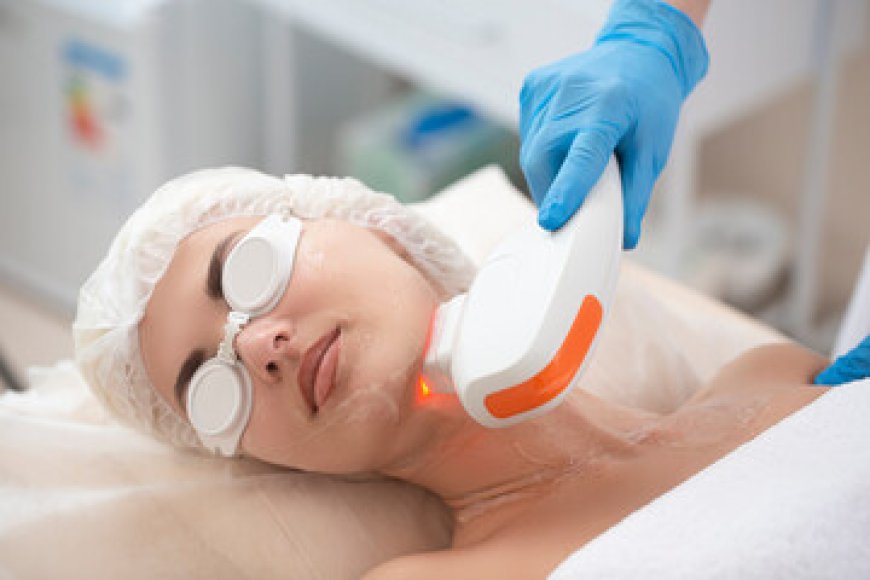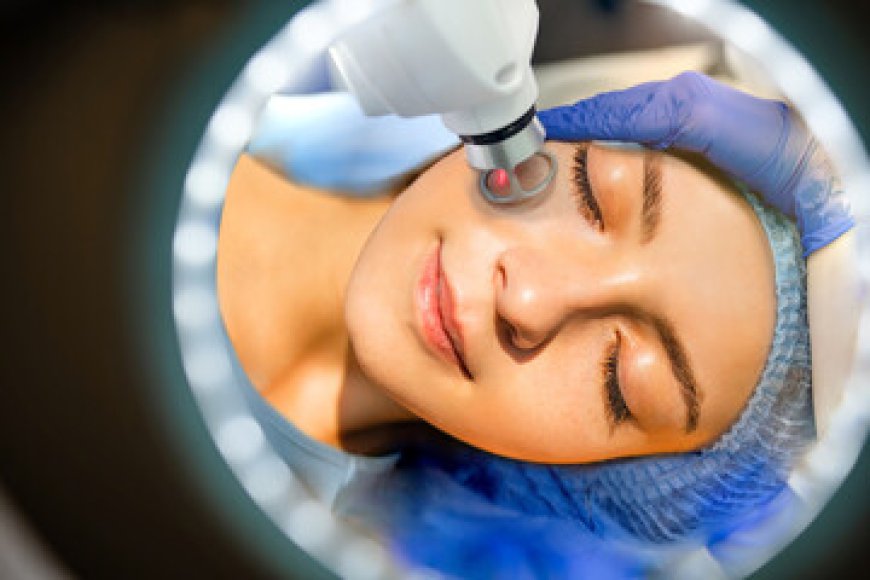Combining Fractional Laser with Other Dermatological Treatments: A Powerful Approach to Skin Rejuvenation
fractional laser فراكشنال ليزر with other dermatological treatments. By integrating different technologies and therapies, it’s possible to enhance the effects of fractional laser and achieve more profound, long-lasting skin rejuvenation.
Fractional laser therapy has become a cornerstone of modern dermatological treatments, helping to address a wide range of skin concerns such as wrinkles, acne scars, stretch marks, and overall skin texture. However, many individuals looking for more dramatic or comprehensive results may choose to combine fractional laser فراكشنال ليزر with other dermatological treatments. By integrating different technologies and therapies, it’s possible to enhance the effects of fractional laser and achieve more profound, long-lasting skin rejuvenation.
In this blog, we’ll explore how combining fractional laser with other treatments can provide superior outcomes, the benefits of this combined approach, and what you can expect when undergoing such a treatment regimen.
What is Fractional Laser?
Fractional laser treatment involves the use of laser technology to target the deeper layers of the skin. It works by creating thousands of tiny, controlled micro-injuries in the skin’s surface, promoting collagen production and stimulating the skin’s natural healing process. This technique can effectively address skin concerns such as:
- Wrinkles and fine lines
- Acne scars
- Stretch marks
- Uneven skin texture
- Sun damage
- Skin laxity and sagging

Fractional lasers are generally categorized into two types: ablative and non-ablative. Ablative lasers remove the outer layer of skin, while non-ablative lasers stimulate the deeper layers without causing any damage to the surface. The non-ablative fractional lasers typically have less downtime and are ideal for addressing milder skin concerns, whereas ablative fractional lasers are more aggressive and effective for severe skin issues.
Why Combine Fractional Laser with Other Treatments?
While fractional laser is incredibly effective on its own, combining it with other dermatological treatments can enhance its benefits and provide a more comprehensive solution. Here are a few reasons why people choose to combine fractional laser with other treatments:
-
Target Multiple Skin Concerns Simultaneously Fractional laser is a great treatment for improving skin texture, pigmentation, and collagen production, but it may not be sufficient to address other issues such as excessive pigmentation, fine lines, or deep wrinkles. Combining fractional laser with other treatments allows for a holistic approach, addressing multiple concerns at once.
-
Boost Results and Speed Up Recovery Some treatments complement fractional laser by targeting different layers of the skin, leading to quicker and more noticeable results. This synergy can also shorten the recovery period, with one treatment helping to optimize the skin's healing process after another.
-
Personalized Treatment Plan Every patient’s skin is unique, and combining treatments allows dermatologists to tailor a personalized plan to address specific concerns. This approach enables practitioners to treat various layers of the skin for optimal rejuvenation and improvement in overall skin health.
-
Minimized Risk and Side Effects By combining fractional laser with other non-invasive treatments, dermatologists can use lower energy settings on the fractional laser, reducing potential side effects or downtime while still achieving effective results. This is especially beneficial for people with sensitive skin.
Popular Treatments to Combine with Fractional Laser
-
Chemical Peels Chemical peels are one of the most commonly combined treatments with fractional laser. Chemical peels involve applying a solution to the skin that exfoliates and removes dead skin cells, improving skin texture and tone. There are different types of chemical peels: superficial, medium, and deep, each designed to address different skin concerns.
How they complement fractional laser:
- While fractional laser stimulates deeper layers of the skin to produce collagen, chemical peels target the surface layer of skin, helping to remove dead cells, hyperpigmentation, and minor imperfections.
- The combination of these two treatments can improve the appearance of wrinkles, fine lines, and discoloration while promoting a smoother, more youthful-looking complexion.
- Chemical peels can enhance the results of fractional laser by revealing fresher skin beneath the treated surface.
Considerations:
- Chemical peels typically require a few days of recovery time due to peeling and flaking. If combined with fractional laser, it is essential to follow a careful aftercare regimen to avoid irritation or over-exfoliation.
-
Microneedling Microneedling is another popular treatment used in combination with fractional laser. This procedure involves using fine needles to create tiny punctures in the skin, stimulating collagen production and improving the skin’s texture and elasticity. Microneedling is highly effective for addressing acne scars, large pores, and overall skin tone.
How they complement fractional laser:
- Both fractional laser and microneedling stimulate collagen production, but in different ways. Microneedling targets the deeper layers of the skin with the micro-punctures it creates, while fractional laser works by delivering light energy beneath the skin’s surface.
- By combining these two treatments, you can accelerate collagen production and enhance the skin’s texture and appearance.
- Microneedling can help prepare the skin to absorb the fractional laser’s energy more effectively, leading to enhanced results.
Considerations:
- Microneedling can cause slight redness and swelling, which is typically short-lived. When combined with fractional laser, the skin may experience a longer recovery time, so it’s important to follow proper aftercare instructions.
-
Botox and Dermal Fillers For those concerned about wrinkles, fine lines, and volume loss, combining fractional laser with injectables such as Botox and dermal fillers can produce excellent results. Botox works by relaxing the muscles responsible for wrinkle formation, while dermal fillers restore volume and plumpness to areas that have lost elasticity.
How they complement fractional laser:
- While fractional laser improves skin texture and stimulates collagen production, Botox and dermal fillers target the underlying causes of facial aging, such as muscle movement and volume loss.
- Combining these treatments offers a multi-dimensional approach, addressing both the surface of the skin and the deeper layers responsible for signs of aging.
Considerations:
- Injectable treatments like Botox and dermal fillers are minimally invasive and require no downtime. However, they should be scheduled in conjunction with fractional laser to allow enough time for healing between procedures.
-
PRP (Platelet-Rich Plasma) Therapy Platelet-Rich Plasma (PRP) therapy, also known as the “vampire facial,” involves extracting a small amount of the patient’s blood, processing it to concentrate the platelets, and then re-injecting it into the skin to stimulate collagen and elastin production.
How they complement fractional laser:
- PRP therapy works synergistically with fractional laser by promoting healing and enhancing collagen production in the treated areas. The PRP can speed up recovery from fractional laser treatments, improve the skin’s overall texture, and help achieve more radiant, youthful skin.
- Combining PRP with fractional laser is particularly effective for treating fine lines, acne scars, and skin laxity.
Considerations:
- PRP therapy can cause some swelling or redness at the injection site. Combining it with fractional laser treatment may slightly extend the recovery period, but the results are typically worth the wait.
Benefits of Combining Fractional Laser with Other Treatments
- Enhanced Results: By combining fractional laser with other treatments, you can see more dramatic and long-lasting improvements, as each therapy targets different aspects of skin rejuvenation.
- Customizable Approach: Your dermatologist can tailor the treatment plan based on your specific skin needs, concerns, and goals, ensuring a more personalized and effective outcome.
- Address Multiple Skin Concerns: Combining treatments allows you to address multiple skin issues simultaneously, such as fine lines, acne scars, skin discoloration, and loss of skin elasticity.
- Boosted Collagen Production: Different treatments work together to promote collagen synthesis, which is essential for youthful, glowing skin.
Conclusion
Combining fractional laser with other dermatological treatments is an effective way to achieve comprehensive skin rejuvenation. Whether you’re looking to reduce wrinkles, improve skin texture, or treat acne scars, this multi-pronged approach allows you to target various layers of the skin and address different concerns simultaneously. However, it is essential to consult with a qualified dermatologist or skincare professional to develop a treatment plan that is tailored to your specific needs and skin type. With the right combination of treatments, you can enjoy smoother, healthier, and more youthful-looking skin with minimal downtime.

 saroosh
saroosh 